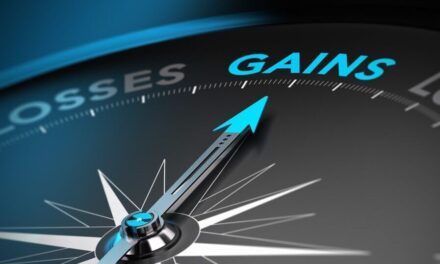I’m your dividend guy, but I’m casting a wider yield net this week.
Let’s talk about bonds.
I haven’t taken bonds seriously in years. With depressed yields since the 2008 crisis and recession, I saw no real point in allocating capital to a fixed income stream without hope of growth.
But today, bonds look lucrative — at least if you know the right moves to make.
I wrote about the inverted yield curve earlier this month. In plain English, a yield curve flips when shorter-term bonds come with higher yields than longer-term bonds.
That’s the exact situation we’re in today. The Treasury yield curve — the one that tracks the most common government bonds — tops out at around the 3-year mark. Today you can buy a 3-year note that yields 4.4%.
From there, yields start to drift lower. The 10-year note yields about 3.9% at today’s prices, and the 30-year yield is hovering around 3.7%.
As I wrote in that recent piece, an inverted yield curve is a sign of market distress. It means that investors are pricing in lower growth ahead.
I won’t rehash all of that here, but I will say this: I love 2- and 3-year Treasuries at these yields.
Why Stay Short-Term?
The most obvious reason to stick with short-term bonds is that we get paid more to do so.
You can find higher yields with 2- to 3-year notes than at longer maturities.
But there’s more to it than that.
The longer a bond’s duration, the more sensitive it is to rising and falling interest rates.
I expect long-term yields to fall from here, which would translate to higher prices.
I think long-term bonds could be a decent speculation. And your total return — interest plus capital appreciation — will come out ahead in longer-term bonds.
But that’s just it.
Long-term bonds are a speculation. Yields could spike in the months ahead, which would send prices lower.
That’s not a disaster if you plan to hold to maturity. But if you’re looking for a safe place to stash your cash until the bear market has run its course … go short.
It’s better to stay short-term, collect your coupon payments and preserve capital until the moment comes to shift back into stocks.
How to Play Short-Term Bonds
Take a look at your cash balance and subtract any cash you might need for immediate expenses.
The rest is your dry powder.
My recommendation is to build a bond ladder starting at 6-month T-bills and work your way out to 3-year Treasuries.
Here’s what a hypothetical $60,000 cash hoard would look like:
- $10,000 in 6-month Treasuries.
- $10,000 in 12-month Treasuries.
- $10,000 in 18-month Treasuries.
- $10,000 in 2-year Treasuries.
- $10,000 in 30-month Treasuries.
- $10,000 in 3-year Treasuries.
This way, you always have a little cash running off that can be reinvested in whatever makes the most sense at the time, whether it be more Treasuries or something more aggressive, such as stocks.
Speaking of Stocks…
Make no mistake. In a permanent income portfolio, I still prefer dividend stocks over bonds.
Over the course of an investing lifetime, dividend stocks provide income growth that you can’t get with bonds.
And if you’re investing in a taxable account, your dividends will be taxed at a lower rate than your bond interest in most cases.
(If you want dividend stocks, you need to check out the latest issue of Green Zone Fortunes. I recommend one of my favorite income stocks of all time along with an entire dividend portfolio. Click here to find out more.)
Bottom line: If you want to park cash somewhere safe to wait out bear market hell, good ol’ U.S. government bonds are the way to go with at least a portion of your portfolio.
To safe profits,
Charles Sizemore, Co-Editor, Green Zone Fortunes
Charles Sizemore is the co-editor of Green Zone Fortunes and specializes in income and retirement topics. He is also a frequent guest on CNBC, Bloomberg and Fox Business.






